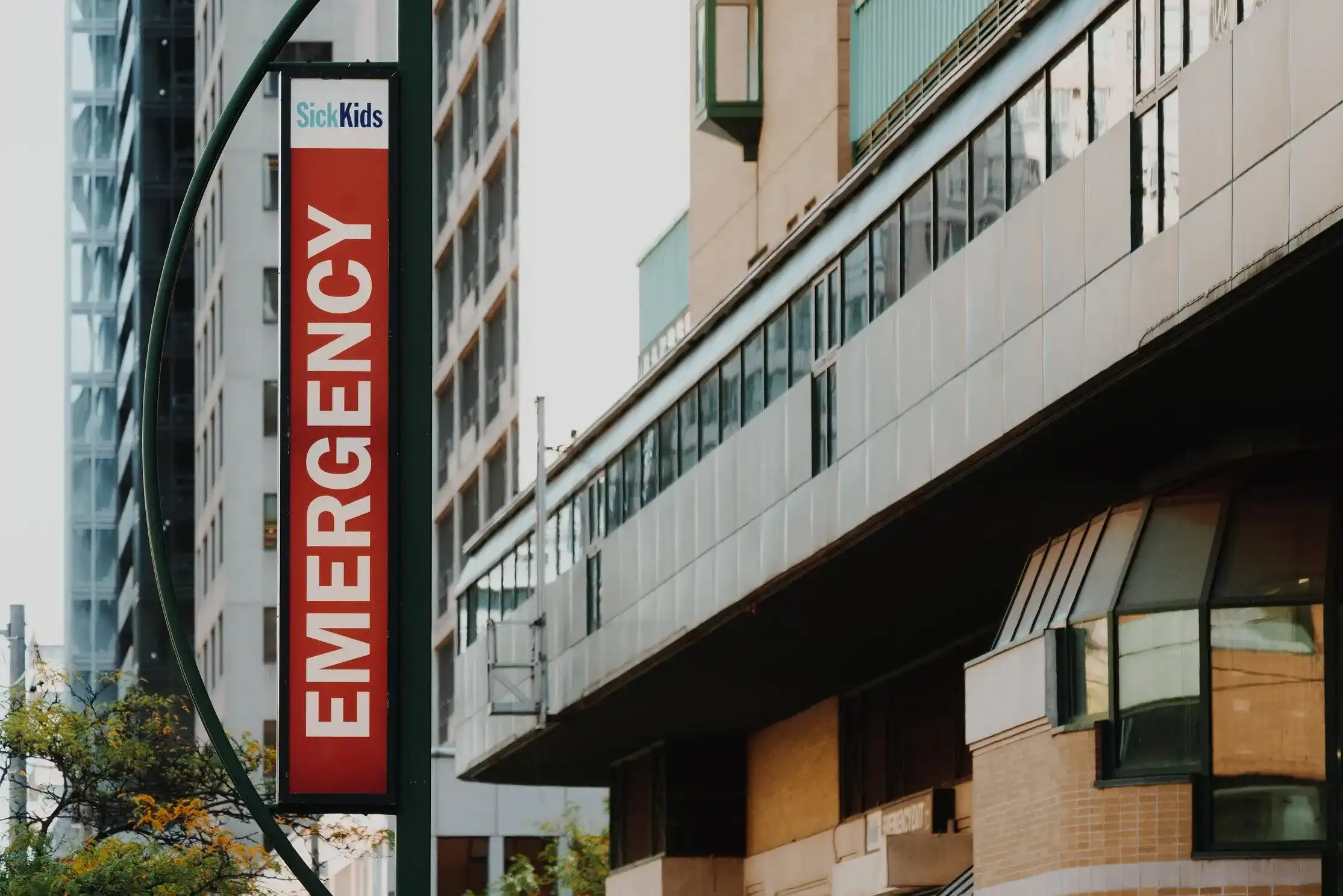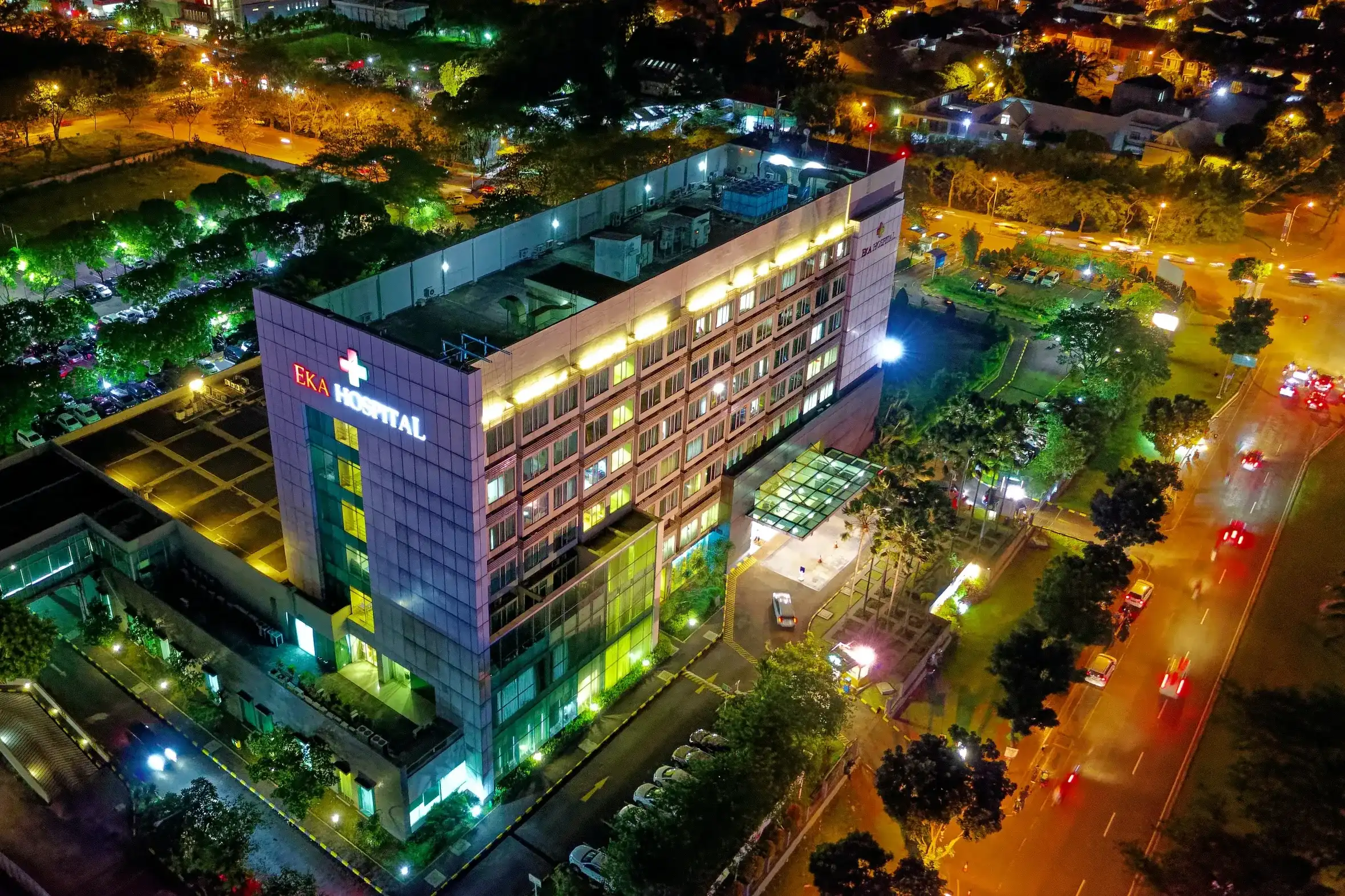Start Here
Indoor navigation technology in hospitals improves patient experience by providing wayfinding and venue discovery through websites, mobile apps, QR codes, and kiosks with turn-by-turn directions to wards, departments, and services. These systems enhance safety by locating emergency exits, providing accessible routes with elevators and ramps, and allowing temporary closure of areas for maintenance. Hospitals benefit from reduced staff burden, improved patient satisfaction, data insights, and seamless wayfinding experiences in complex healthcare facilities.
Whether you’re going to the hospital for an emergency, an appointment, or to visit someone, finding your way around a hospital can be a daunting and stressful experience.
Healthcare spaces are often large, confusing, and in a constant state of flux. Departments move, services expand, and renovations occur, which makes it even more difficult to figure out your hospital’s layout. As such, hospitals and healthcare spaces must consider indoor mapping and indoor navigation tools that can better assist patients and visitors, and ultimately deliver quality care.
Let’s explore the benefits that digital indoor mapping and indoor navigation can bring to the healthcare space!
Complex facilities
Navigating a hospital can be extremely challenging and time-consuming, with complex layouts that consist of multiple wings, departments, and services. Upon arrival, patients are often in a high-stress state and need help to locate their destination immediately.

Unfortunately, there is often a lack of distinguishing features that guide their arrival, and many wayfinding tools that exist today are unsatisfactory. Static maps and signs are often confusing and ineffective at leading visitors to their destination, and while staff and volunteers can show visitors around, this takes valuable time away from hospital staff. This is especially important in a healthcare space, and even more so during a global pandemic, where resources are needed most.
How can we make wayfinding and indoor navigation easier?
Find your way around
Digital indoor mapping and navigation provides a solution, as it makes discovering a location easier and less time-consuming. Indoor navigation technology calculates the fastest route to your destination, providing accurate turn-by-turn directions and wayfinding. This improves the overall patient and visitor experience at hospitals, and helps property managers keep their maps updated and accurate as facilities change and grow. Here are a few ways that this technology can be implemented in hospitals:
- Website
- Mobile application
- Kiosks and directories
- Printed materials
- QR codes
On a hospital’s website, this technology allows patients to search and locate a department, the registration desk, and more, prior to their visit. The best part is that you only need a small amount of information, such as your doctor’s name or the name of the procedure, in order to be routed to the proper registration desk or waiting area.
With a wayfinding application, indoor maps and navigation can be accessed directly through a patient’s mobile device. This way, you can take directions on-the-go, and avoid having to wonder “where do I go now?”. Not only does this provide a seamless experience for visitors and patients, but it makes indoor maps accessible from any device!

Implemented within directories, visitors and patients can self-serve and free up valuable time taken away from healthcare providers and volunteers. Even more, kiosks and directories can be placed at main points of entry and around the hospital to aid patients in their start-to-end journey. This is important as hospitals have miles of halls and corridors that are almost identical, making it easier to get lost throughout your journey. With directories around common points of interest, this problem can be avoided.
Printed materials can also be used to offer indoor navigation capabilities across the hospital. QR codes can be added on printed materials and signage throughout the hospital that, when scanned, will pull up an interactive map in the browser of one’s mobile phone. This can also be used to pre-populate directions directly to a location, such as the eye department featured on a printed brochure. As another option, QR codes can be placed on appointment cards so that patients can quickly look up directions before their next appointment.
The unique thing about QR codes is that they can also be implemented on kiosks and directories to offer a touchless experience. On a contactless kiosk, patients and visitors can scan QR codes and utilize the kiosks’ offerings from their mobile device. This way, users can avoid contact with the touchscreen, thereby helping with the spread of germs. This not only presents a health and safety measure, but it also offers convenience to patients, visitors, and staff.
Better safety measures with indoor mapping
Needless to say, particularly in the healthcare space, the health and safety of patients and visitors is of utmost importance. Hospital administrators can leverage indoor navigation technology to ensure that each individual remains safe throughout the hospital.
In the case of an emergency, it’s crucial that patients and staff alike are able to locate emergency exits and obtain safety instructions. With indoor mapping technology, you’re able to locate and populate the shortest and most efficient route to emergency exits. Even more, with indoor positioning, property managers can send push-notifications to alert everyone in the case of an emergency. Location based services like safety alerts and push notifications can also notify individuals of nearby sanitization stations, or locations that are closed temporarily such as corridors, washrooms, or elevators.

The flexibility of an indoor mapping platform makes it easy for property managers to temporarily close down certain areas of the hospital. This ensures that navigation is removed through these closed sites. For instance, if a hallway or stairwell is too narrow for social distancing, navigation can be removed so that guests aren’t led to these areas. Along with improving social distancing, this can be used to control the flow of traffic within a hospital.
Another important feature of navigation technology is that accessibility mode is automatically turned on. This way, patients are provided with accessible routes that utilize elevators and ramps over stairs. This is crucial within the healthcare space as it guarantees a safe route from Point A to Point B.
Hospitals can also utilize indoor positioning to gain insights on their patients and visitors, and how they interact with the space. In turn, they can use this data to offer an enhanced and safer space. For example, if a lot of patients and staff are searching for an elevator in a specific area, hospitals could consider implementing one. All things considered, this technology can be used in countless ways to ensure the safety of everyone in the hospital.
Looking forward
Together, we can see that digital indoor mapping and navigation technology improves the patient experience in the healthcare space. By implementing this technology, hospitals can reduce the frustration and stress faced by patients as they try to navigate through mazes of buildings, floors, and departments. Being able to get people safely to where they need to go will not only save time and resources, but improve patient and visitor satisfaction. This technology can also be leveraged to improve safety measures across the hospital and provide a consistent indoor mapping experience across multiple platforms such as web, directories, and print materials.
To learn more about hospital and healthcare maps and navigation technology used in the healthcare industry, contact us.
Share


